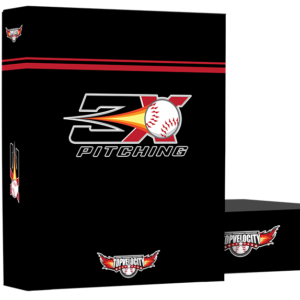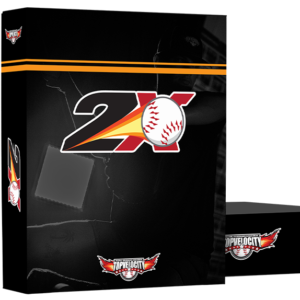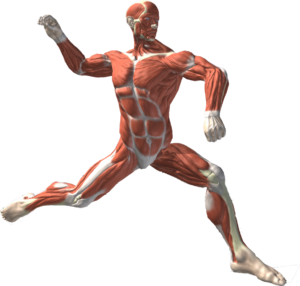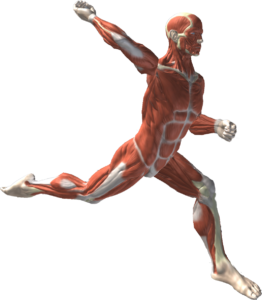 If you are searching for What muscles are important for playing baseball then this is the article for you!
If you are searching for What muscles are important for playing baseball then this is the article for you!
Baseball requires a unique blend of strength, quickness, and precision. Athletes must use the strength and coordination of multiple muscle groups to excel on the field. In this detailed guide, we'll look at the muscles needed for baseball, delve into their functions, and offer tips on how to train and maintain them successfully.
What muscles are important for playing baseball?
Baseball is a fast-paced sport that requires rapid movements, quick sprints, and accurate throws. Several essential muscle groups are required to excel in all parts of the game. Let's look at the muscles that are essential for baseball:
- The quadriceps
The quadriceps, which are placed in the front of the thighs, are required for explosive movements like sprinting, running the bases, and fast lateral movements in the outfield. - The hamstrings
The hamstrings, which are located at the rear of the thighs, contribute to forceful leg extension and provide stability during activities such as batting and fielding.  Gluteus maximus
Gluteus maximus
The glute muscles are essential for power generation while batting, throwing, and sprinting. Glute strength improves hip extension and general lower body strength.- Muscles of the Core
A strong core gives you stability and balance, which is essential for precise throwing, batting, and fielding. Engaging core muscles aids in the efficient transfer of power from the lower to upper body. - The Rotator Cuff
The rotator cuff muscles in the shoulder are essential for throwing and pitching accuracy. These muscles help to support the shoulder joint and allow for accurate movements. - Latissimus Dorsi
The lats, which are located in the upper back, play an important part in creating power while hitting and throwing. They aid in shoulder movement and trunk stability. - Muscles of the Forearm
Strong forearm muscles are essential for bat control and throwing accuracy. These muscles enable for wrist flexion and extension, which is necessary for bat and ball control.  The Calves
The Calves
The calf muscles aid in explosive movements, particularly when running the bases. Athletes with strong calves can accelerate rapidly and maintain agility.- Hip Flexors
Running, hitting, and fielding all require hip flexor flexibility and strength. Hip mobility improves stride length and agility. - Obliques
The oblique muscles, which are placed on the sides of the belly, help in the rotational motions required for batting and throwing. They help to generate power via torso rotation. - Triceps
Triceps Muscle strength is essential for accurate and forceful throwing. They help to extend the elbow during the throwing motion. - Pectoral Muscles
Baseball involves the pecs in a variety of activities, including batting and pitching. They aid in shoulder stabilization and contribute to the force generated during movements.  Adductors and Abductors
Adductors and Abductors
During lateral motions such as fielding ground balls or reaching for a catch, the inner and outer thigh muscles (adductors and abductors) offer stability.- Erector Spinae
The muscles of the spine aid in maintaining an upright posture, which is necessary for effective throwing, fielding, and overall stability. - Scapular Muscles
Scapular stability is essential for proper throwing and hitting movements. Scapular muscles that are strong ensure proper shoulder movement and help to prevent injuries. - Muscles of Forearm
The forearm flexor muscles aid in wrist flexion, which is necessary for controlling the bat and creating power while hitting. - Serratus Anterior
During throwing, this muscle helps with scapular movement and shoulder stability. It aids with the maintenance of normal shoulder mechanics and the prevention of overuse injuries.  Transverse Abdominis
Transverse Abdominis
The transverse abdominis is a deep core muscle that helps with core stability and balance during active actions on the field.- Deltoid Muscles
During baseball activities such as throwing, catching, and batting, the deltoids offer shoulder strength and stability. - Muscles of the Neck
Strong neck muscles help to keep the head stable during quick motions like batting and throwing. Neck strength can aid in injury prevention and posture maintenance. - Extensors of the Wrist
These muscles help in wrist extension when batting and throwing. Strong wrist extensors aid with bat control and power generation. - Ankle Muscles
Ankle stability is critical for maintaining balance during actions like as pitching, batting, and fielding. Strong ankle muscles help to prevent sprains and improve stability. - Plantar Flexors
During running and sprinting, the plantar flexor muscles help in forceful push-off. They contribute to the generation of speed and power. - Transversus Abdominis
Another deep core muscle, the transversus abdominis, helps to maintain good posture during baseball actions by supporting spinal stability. - Muscles with Grip Strength
A firm grip is essential for bat control and catching. Grip strength is provided by the hand and forearm muscles, which ensure a strong grip on the bat and ball.
TopVelocity Will Help You Learn What Muscles are Important for Playing Baseball
 Peak performance in baseball necessitates a comprehensive training routine that targets the individual muscles required for success on the field. TopVelocity, a well-known leader in sports science and training, has created tailored programs to maximize the development of these important muscle groups. Let's look at how the TopVelocity 3X Pitching Velocity Program and the 2X Velocity Program for position players contribute to exceptional baseball brilliance by increasing muscle strength, power, and coordination.
Peak performance in baseball necessitates a comprehensive training routine that targets the individual muscles required for success on the field. TopVelocity, a well-known leader in sports science and training, has created tailored programs to maximize the development of these important muscle groups. Let's look at how the TopVelocity 3X Pitching Velocity Program and the 2X Velocity Program for position players contribute to exceptional baseball brilliance by increasing muscle strength, power, and coordination.
TopVelocity's Science-Backed and Performance-Driven Approach
With a strong foundation in sports science and biomechanics, TopVelocity is at the forefront of evidence-based training programs. These programs, spearheaded by Brent Pourciau, a retired professional pitcher who overcame career-threatening injuries, are designed to address baseball's unique needs while emphasizing injury prevention and peak performance. Pourciau's personal path and expertise as a consultant to MLB organizations have resulted in programs that enhance efficiency and power by harnessing the body's mechanics.
Unleash Explosive Power with the 3X Pitching Velocity Program
 The 3X Pitching Velocity Program is a ground-breaking approach to pitching that goes above and beyond established methods. This program emphasizes not only muscle growth but also mechanical optimization for higher pitching velocity. Let's have a look at how it optimally develops key muscles and more:
The 3X Pitching Velocity Program is a ground-breaking approach to pitching that goes above and beyond established methods. This program emphasizes not only muscle growth but also mechanical optimization for higher pitching velocity. Let's have a look at how it optimally develops key muscles and more:
- Quadriceps, Hamstrings, and Glutes: To activate and improve these muscle groups, the program combines intense lower-body activities such as plyometrics and Olympic lifts. These actions not only increase power but also improve pitching speed.
- Core Muscles: Core stability exercises are used to guarantee that power is transferred efficiently from the lower to the upper body during the pitching motion. Control and velocity are enhanced by a robust core.
- Shoulder Muscles and Rotator Cuff: The program stresses a thorough shoulder fitness routine that targets the rotator cuff and surrounding muscles. This improves the shoulder complex and lowers the incidence of pitching-related problems.
Position Players 2X Velocity Program: Complete Athleticism
 Position players must possess a distinct set of abilities, including explosive hitting, fielding, and base running. The 2X Velocity Program caters to these individuals' specific demands, improving overall athleticism and muscle development:
Position players must possess a distinct set of abilities, including explosive hitting, fielding, and base running. The 2X Velocity Program caters to these individuals' specific demands, improving overall athleticism and muscle development:
- Forearm Muscles: Position players rely heavily on bat control and power. The program includes exercises that improve grip strength and forearm strength for better bat control.
- Hip Flexors and Obliques: For hitting and fielding, quick lateral movements and rotational force are essential. Agility drills are included in the program, which improves hip mobility and oblique strength, resulting in better swing mechanics and lateral movement.
- Calf Muscles and Ankles: Strong calves and sturdy ankles are required for base running. The program incorporates intense plyometric exercises to improve calf strength and ankle stability for sprinting.
Obtaining Unparalleled Excellence
TopVelocity's 3X Pitching Velocity Program and 2X Position Player Velocity Program go beyond typical training methods. These regimens provide athletes a competitive advantage by methodically targeting the muscles necessary for baseball success. These programs not only improve muscular development, but they also improve mechanics, resulting in enhanced power, speed, and performance on the field.
Checkout the TopVelocity Patreon if you are interested in these programs with remote training and a weekly video analysis!
FAQs: What muscles are important for playing baseball?
Q: How can I successfully exercise my core muscles for baseball?
A: To develop your core muscles, incorporate workouts such as planks, Russian twists, and medicine ball tosses.
Q: Are there any exercises that can be done to prevent shoulder injuries in baseball?
A: Rotator cuff strengthening and scapular stability routines, for example, can help lower the risk of shoulder injury.
Q: Can strong hip flexors increase my baserunning speed?
A: Without a doubt! Strong hip flexors increase stride length and agility, which leads to faster running.
Q: How important are oblique muscles in baseball?
A: Oblique muscles help generate power by rotating the torso during batting and throwing movements.
Q: How can I strengthen my wrists for better bat control?
A: Wrist curls and reverse wrist curls are great for targeting forearm muscles and improving wrist strength.
Q: Are there any exercises that can be done to prevent ankle sprains in baseball?
A: Balance and stability exercises, as well as calf raises, can assist strengthen ankle muscles and lower the chance of injuries.
Baseball excellence necessitates a comprehensive commitment to training and conditioning. You may improve your performance on the field by recognizing the value of each muscle group and adding tailored exercises into your routine. Remember that mastering the game of baseball requires a combination of strength, flexibility, and coordination.
Keywords: What muscles are important for playing baseball?


 The Calves
The Calves Adductors and Abductors
Adductors and Abductors Transverse Abdominis
Transverse Abdominis

